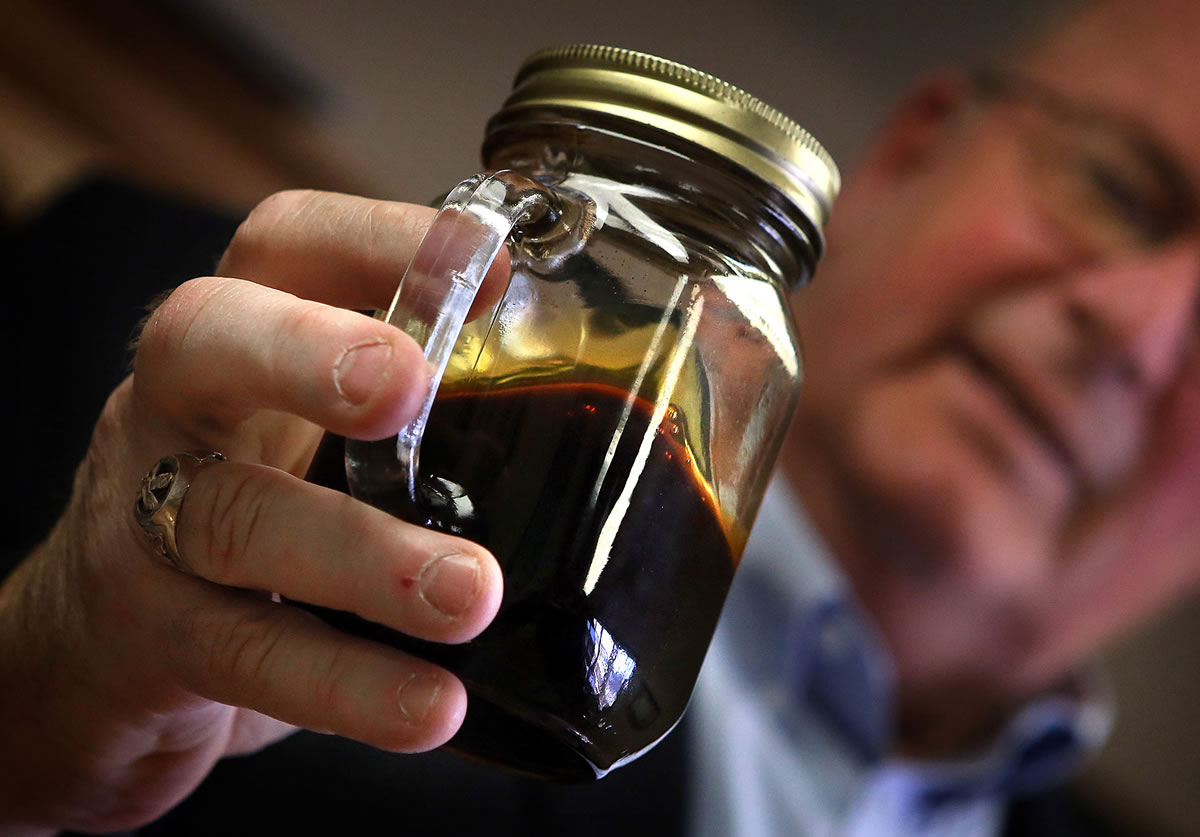WASHINGTON — Crude oil shipped by railroad from North Dakota is drawing fresh scrutiny from regulators concerned that the cargo is adding environmental and safety hazards, something that analysts say could raise costs.
The Federal Railroad Administration is investigating whether chemicals used in hydraulic fracturing are corroding rail tank cars and increasing risks. Separately, three pipeline companies including Enbridge Inc. warned regulators that North Dakota oil with too much hydrogen sulfide, which is toxic and flammable, was reaching terminals and putting workers at risk.
Until last month, safety advocates’ chief worry was spills in derailments. After tank cars blew up July 6 on a train in Quebec, investigators in Canada are considering whether the composition of the crude, which normally doesn’t explode, may have played a role in the accident that killed 47 people. The oil was from North Dakota’s Bakken shale formation.
“Crude historically has not been considered in the highest category of hazmat,” said Anthony Hatch, an independent analyst in New York who has tracked railroad companies for almost three decades. “The risks have been considered to be environmental, not to humans. Perhaps Bakken crude should be considered in a higher category.”
The cost of added safety measures, such as tighter rail car specifications that would make obsolete some current models, may become an issue if oil prices fall, according to Kevin Book, managing director at ClearView Energy Partners, a Washington-based policy analysis firm.
“The solution to rail safety issues looks like unanticipated costs, whether, it be rail car investments or new safety protocols,” Book said in an email.
Such costs are less likely to slow production when oil is trading for $100 or more per barrel, Book said. “At $75 per barrel, it could be a big deal,” he said. Crude oil futures have traded higher than $100 a barrel since July.
2nd biggest producer
North Dakota is the nation’s second-biggest oil-producing state, with more than 790,000 barrels a day this year, up from about 150,000 barrels in 2008. Railroads move 75 percent of the state’s crude, including the load of more than 70 cars that derailed and exploded last month in Lac-Mégantic, Quebec.
Canadian regulators are testing the composition of crude from the wrecked Montreal Maine & Atlantic Railway Ltd. freight train. A question they say they’re asking is why the derailment led to such an intense inferno, which regulators have called “abnormal.” They visited North Dakota as part of their review, said Chris Krepski, a spokesman for the Transportation Safety Board of Canada.
“We did take samples from the tank cars to get a better understanding of what was actually carried in them and verifying that against the shipping documents,” Krepski said. “It’s safe to say we’re looking at everything.”
Montreal, Maine & Atlantic said last week it was forced to file for bankruptcy because of potential liability in the crash.
Much of North Dakota’s production relies on hydraulic fracturing or fracking, a technique in which millions of gallons of chemically treated water and sand are forced underground to shatter rock and free trapped oil. Highly corrosive hydrochloric acid is widely used to extract oil in the state, according to a 2011 report from the Society of Petroleum Engineers.
In a July 29 letter to the American Petroleum Institute, a Washington-based lobbying and standards-setting group for the oil and gas industry, the railway administration said it found increasing cases of damage to tanker cars’ interior surfaces. A possible cause is contamination of crude by materials used in fracking, according to the letter.
“If the hydrochloric acid is carried with the oil into rail cars, corrosion can be an issue,” Andy Lipow, president of Houston-based Lipow Oil Associates, said in an email.
Shippers need to know the properties of the oil to ensure that it’s transported in tankers equipped to handle the cargo, according to the rail agency’s letter. Because information provided to railroads on the properties of oil is not gathered from tests, the agency said it “can only speculate” as to the number of cars in violation of hazardous materials regulations.
Investigating whether the chemical composition of Bakken oil makes it more likely to corrode tank cars is reasonable, said Peter Goelz, a former National Transportation Safety Board managing director who’s now a senior vice president with O’Neill and Associates in Washington.
The Quebec accident also revived a debate over the type of cars used to haul oil. For years, regulators and watchdogs have sought improvements to a common car design shown to be susceptible to rupture when derailed. The NTSB estimates that 69 percent of today’s rail tank car fleet has “a high incidence of tank failure during accidents,” Chairman Deborah Hersman wrote in a letter last year. The agency recommended thicker shells and other modifications to strengthen the cars.
Sen. Charles Schumer, D-N.Y., this week called on U.S. regulators to phase out the older cars, known as DOT-111s, saying they’ve contributed to spills of hazardous materials.
“The DOT-111 tank car has proven particularly prone to spills, tears and fires in the event of a derailment, and it’s simply unacceptable for New York’s communities along the rail lines to face that risk when we know thicker, tougher cars could keep us safer,” Schumer said in an emailed statement.
The rail industry is fighting a proposal to retrofit existing cars, saying it could cost as much as $1 billion.



